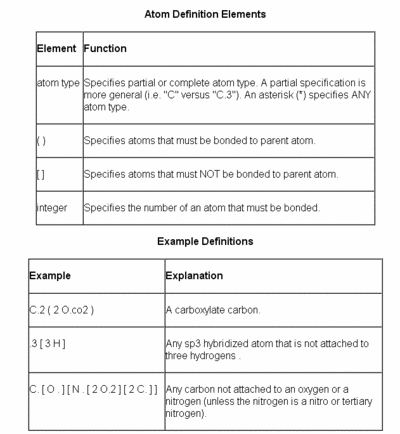Atom Definition Rules: Difference between revisions
Jump to navigation
Jump to search
No edit summary |
m (3 revisions) |
||
| (2 intermediate revisions by 2 users not shown) | |||
| Line 1: | Line 1: | ||
[[Image:Adf.gif|right|400px|]] The definition files use a consistent atom labeling convention for which an atom in virtually any chemical environment can be identified. The specification of adjacent atoms is nested using the elements listed below: | |||
* Each element must be separated by a space. | |||
* If more than one adjacent atom is specified, then ALL must be present (i.e. a boolean AND for rules within a line). | |||
* If a label can have multiple definition lines, then any ONE of them must be satisfied for inclusion (i.e. a boolean OR for rules on different lines). | |||
[[Category:Formats]] | |||
[[Category:DOCK]] | |||
Latest revision as of 18:10, 8 October 2012
The definition files use a consistent atom labeling convention for which an atom in virtually any chemical environment can be identified. The specification of adjacent atoms is nested using the elements listed below:
- Each element must be separated by a space.
- If more than one adjacent atom is specified, then ALL must be present (i.e. a boolean AND for rules within a line).
- If a label can have multiple definition lines, then any ONE of them must be satisfied for inclusion (i.e. a boolean OR for rules on different lines).
